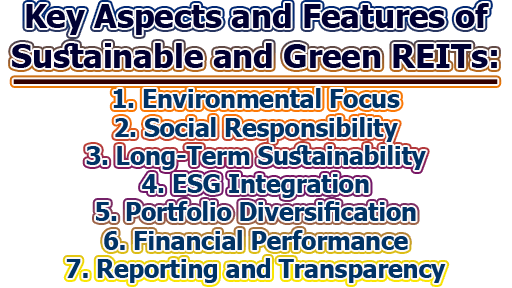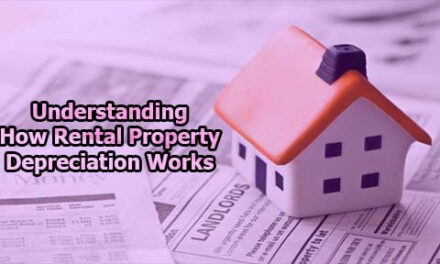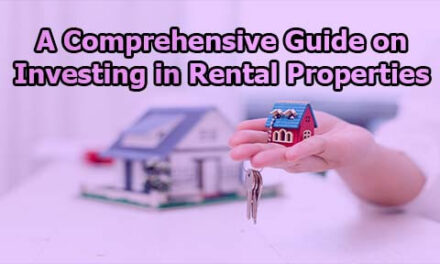Key Aspects and Features of Sustainable and Green REITs:
Sustainable and Green Real Estate Investment Trusts (REITs) are a type of investment vehicle that focuses on environmentally friendly and socially responsible real estate assets. They provide investors with an opportunity to support sustainable development while earning financial returns. These REITs invest in properties that prioritize energy efficiency, renewable energy sources, green building practices, and sustainable development strategies. Here are some key aspects and features of sustainable and green REITs:
1. Environmental Focus: Sustainable and green REITs prioritize investments in properties that have a positive impact on the environment. This includes properties with energy-efficient designs, green building certifications (such as LEED or BREEAM), and the use of renewable energy sources such as solar or wind power. The properties in the portfolio of these REITs are often designed to minimize resource consumption, reduce carbon emissions, and promote sustainable practices.
- Energy Efficiency: Sustainable and green REITs prioritize properties that are designed to be energy-efficient. This includes features like high-performance insulation, efficient heating and cooling systems, LED lighting, and smart building automation systems. These energy-efficient practices help reduce the overall energy consumption of the properties, leading to lower operating costs and decreased carbon emissions.
- Renewable Energy Sources: These REITs often invest in properties that incorporate renewable energy sources such as solar panels or wind turbines. By generating clean energy on-site, these properties reduce their reliance on fossil fuels and contribute to the transition towards a low-carbon economy. Additionally, they may also invest in off-site renewable energy projects to offset their carbon footprint.
- Water Conservation: Sustainable and green REITs promote water conservation practices in their properties. This includes the implementation of water-efficient fixtures, rainwater harvesting systems, and advanced irrigation techniques. By reducing water consumption, these properties help preserve local water resources and mitigate the risks associated with water scarcity.
2. Social Responsibility: These REITs also consider the social impact of their investments. They may invest in properties that support affordable housing, community development, and social infrastructure. By addressing social needs, sustainable and green REITs contribute to the overall well-being of communities and promote inclusive growth.
- Affordable Housing: Some sustainable and green REITs prioritize investments in affordable housing projects. By investing in properties that provide housing options for low-income individuals and families, these REITs contribute to addressing the affordable housing crisis and promoting social equity.
- Community Development: These REITs may invest in properties that support community development initiatives. This can include mixed-use developments that incorporate amenities such as parks, community centers, and retail spaces, fostering vibrant and inclusive communities.
- Social Infrastructure: Sustainable and green REITs also consider investments in social infrastructure such as healthcare facilities, educational institutions, and recreational spaces. These properties enhance the quality of life for communities and support essential services.
3. Long-Term Sustainability: Sustainable and green REITs focus on long-term sustainability and resilience. They invest in properties that are built to withstand environmental challenges and climate change impacts. These properties often incorporate features like advanced insulation, stormwater management systems, and resilient construction materials to reduce risks and ensure long-term value.
- Climate Resilience: Sustainable and green REITs focus on investing in properties that are designed to withstand the impacts of climate change. They consider factors like sea-level rise, extreme weather events, and changing weather patterns when selecting properties. By incorporating resilient design features and adapting to future climate risks, these properties maintain their value and reduce potential damages.
- Sustainable Materials: These REITs prioritize properties that use sustainable and environmentally-friendly building materials. This includes materials with low embodied carbon, recycled content, and sustainably sourced materials such as FSC-certified wood. By choosing sustainable materials, these properties minimize their environmental footprint and promote circular economy principles.
4. ESG Integration: Environmental, Social, and Governance (ESG) factors play a crucial role in the investment decision-making process of sustainable and green REITs. They consider the environmental and social performance of their properties and aim to align their investments with sustainable development goals. ESG integration helps these REITs assess risks and opportunities associated with climate change, social responsibility, and good governance practices.
- Environmental Factors: Sustainable and green REITs assess the environmental impact of their properties, including energy and water usage, waste management practices, and carbon emissions. They may implement energy monitoring systems, conduct regular energy audits, and set targets for reducing resource consumption. By actively managing environmental factors, these REITs aim to reduce operational costs and enhance the sustainability performance of their properties.
- Social Factors: These REITs also consider social factors such as tenant well-being, diversity and inclusion, and community engagement. They may prioritize properties that provide amenities and services that promote occupant health and well-being. Additionally, they may engage with local communities, stakeholders, and tenants to understand and address their needs and concerns.
- Governance Factors: Sustainable and green REITs emphasize strong governance practices. They have clear policies and procedures in place to ensure transparency, accountability, and ethical conduct. This includes effective board oversight, responsible investment practices, and adherence to relevant regulations and standards.
5. Portfolio Diversification: Sustainable and green REITs often have diversified portfolios that include various types of properties such as residential, commercial, industrial, and mixed-use. Diversification helps reduce investment risks and provides stable income streams for investors. These REITs may also invest in green infrastructure projects like renewable energy installations, energy storage facilities, or sustainable transportation assets.
- Cost Savings: Sustainable and green REITs benefit from cost savings through energy and resource efficiency measures. By reducing energy consumption and implementing sustainable building practices, they can lower operating costs, resulting in increased net operating income and improved financial performance.
- Property Value: Properties with sustainable features often have increased market value and attractiveness to tenants and buyers. Green buildings and sustainable properties are in high demand as businesses and individuals increasingly prioritize sustainability. This demand can lead to higher occupancy rates, longer lease agreements, and potentially higher rental or sale prices for the properties held by sustainable and green REITs.
- Risk Mitigation: Sustainable and green REITs proactively address environmental and social risks associated with their properties. By investing in properties that are resilient to climate change and aligning with sustainable development goals, these REITs reduce exposure to risks such as rising energy costs, stricter environmental regulations, and reputational damage. This risk mitigation enhances the long-term financial stability and resilience of the REITs.
6. Financial Performance: While the primary focus of sustainable and green REITs is on sustainable development, they also aim to deliver competitive financial returns to their investors. By investing in environmentally-friendly properties and leveraging sustainability-related incentives, they can potentially benefit from cost savings, increased property values, and reduced operational risks over the long term.
- Property Types: Sustainable and green REITs maintain diversified portfolios that encompass various property types. This diversification spreads the investment risk and ensures stability. They may invest in residential properties, commercial buildings, industrial spaces, and mixed-use developments. By having a mix of property types, sustainable and green REITs can capture different market segments and adapt to changing market conditions.
- Geographic Diversity: These REITs often invest in properties located in different geographic regions. By diversifying their geographic footprint, they reduce exposure to localized risks such as natural disasters or economic downturns in specific areas. This geographic diversity helps stabilize the overall performance of the REITs’ portfolios.
7. Reporting and Transparency: Sustainable and green REITs often prioritize transparent reporting on their ESG performance. They provide regular updates to investors on the environmental and social impact of their investments, including energy efficiency metrics, greenhouse gas emissions, and community engagement initiatives. This transparency helps investors make informed decisions and ensures accountability.
- ESG Reporting: Sustainable and green REITs prioritize transparency and provide detailed reporting on their environmental, social, and governance performance. They disclose relevant ESG metrics, including energy and water consumption, greenhouse gas emissions, waste management practices, social impact initiatives, and governance policies. This reporting allows investors to assess the sustainability performance of the REITs and make informed investment decisions.
- Stakeholder Engagement: These REITs engage with stakeholders such as investors, tenants, local communities, and regulatory bodies. They seek input from stakeholders, address concerns, and communicate their sustainability strategies and initiatives. By engaging with stakeholders, sustainable and green REITs foster trust and build strong relationships, which can positively impact their reputation and long-term success.
In conclusion, sustainable and green REITs focus on environmentally friendly and socially responsible real estate investments. They prioritize energy efficiency, renewable energy sources, green building practices, and long-term sustainability. By integrating ESG factors into their investment decisions, these REITs align their portfolios with sustainable development goals. They aim to deliver competitive financial returns while promoting environmental stewardship, social responsibility, and good governance. Through their investments, sustainable and green REITs contribute to a more sustainable future and create positive impacts on communities and the environment.

Library Lecturer at Nurul Amin Degree College










